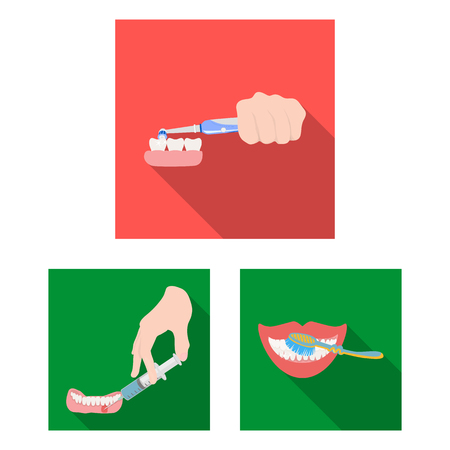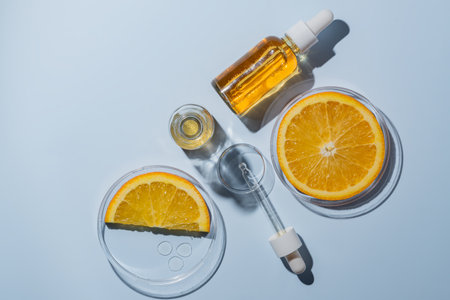Introduction to Budget-Friendly Teeth Whitening
Everyone wants a bright, white smile, but professional teeth whitening treatments can be expensive. The good news is that you don’t have to spend a fortune to achieve whiter teeth. Your diet and lifestyle play a significant role in how effective budget-friendly teeth whitening methods can be. By understanding these factors, you can make simple changes that enhance your results without overspending.
How Diet Affects Teeth Whitening
The foods and drinks you consume daily can either help or hinder your teeth whitening efforts. Certain foods cause staining, while others naturally help keep your teeth clean and bright.
Foods and Drinks That Stain Teeth
Some foods and beverages contain pigments and acids that gradually discolor your teeth. Here are some common culprits:
| Food/Drink | Why It Stains |
|---|---|
| Coffee & Tea | Contains tannins that cause yellowing over time. |
| Red Wine | Has dark pigments that stick to enamel. |
| Soda & Sugary Drinks | Acidic and full of artificial coloring. |
| Berries (Blueberries, Blackberries) | Naturally dark-colored juices stain teeth. |
| Soy Sauce & Balsamic Vinegar | Dark pigmentation leads to discoloration. |
Teeth-Friendly Foods
Certain foods can actually help maintain whiter teeth by promoting saliva production and gently scrubbing away stains.
| Food | How It Helps |
|---|---|
| Dairy Products (Milk, Cheese, Yogurt) | Rich in calcium and lactic acid, which strengthen enamel. |
| Crisp Fruits & Vegetables (Apples, Carrots, Celery) | Naturally scrub the surface of teeth. |
| Pineapple | Contains bromelain, an enzyme that helps break down stains. |
| Nuts & Seeds | Abrasive texture helps remove surface stains. |
| Water | Keeps the mouth hydrated and washes away staining particles. |
Lifestyle Habits That Impact Teeth Whitening
Your daily habits also affect how white your teeth appear. Making small adjustments can significantly improve your whitening results without extra cost.
Avoid Smoking and Tobacco Products
Tobacco use is one of the biggest contributors to yellowed teeth. The nicotine and tar in cigarettes stain teeth quickly. Quitting or reducing tobacco use can lead to noticeable improvements over time.
Practice Good Oral Hygiene
A consistent oral care routine helps prevent stains from setting in. Be sure to:
- Brush your teeth at least twice a day with a fluoride toothpaste.
- Floss daily to remove plaque between teeth.
- Mouthwash with whitening properties can help reduce surface stains.
- Sip water after consuming staining foods or drinks to wash away residue.
Use Affordable Whitening Methods
If youre on a budget, there are many low-cost ways to whiten your teeth at home:
- Baking soda mixed with water or toothpaste for gentle stain removal.
- Hydrogen peroxide as a mild bleaching agent when used safely.
- Over-the-counter whitening strips or gels for gradual improvement.
- Eating fiber-rich fruits like apples to naturally scrub away stains.
Your diet and lifestyle choices have a direct impact on how well budget-friendly whitening methods work. By making simple adjustments, you can enhance your results without spending extra money on expensive treatments. In the next section, well explore specific at-home remedies that can further improve your smile on a budget!
Foods and Drinks That Affect Teeth Stains
When trying to maintain a brighter smile on a budget, it’s important to be mindful of the foods and drinks that can stain your teeth. Some everyday items in your diet contain pigments and acids that contribute to discoloration over time. Below, we explore common stain-causing foods and beverages, along with some alternatives to help minimize staining.
Common Stain-Causing Foods and Drinks
Certain foods and drinks have intense pigments or acidic properties that can wear down enamel and lead to stains. Here are some of the most common culprits:
| Food/Drink | Why It Stains |
|---|---|
| Coffee | Contains tannins that cause yellowing over time. |
| Red Wine | Rich in chromogens and tannins, which cling to enamel. |
| Soda & Dark-Colored Beverages | The combination of acid and artificial coloring leads to staining. |
| Soy Sauce & Dark Sauces | The deep pigmentation easily absorbs into enamel pores. |
| Berries (Blueberries, Blackberries) | Naturally high in strong pigments that stain teeth. |
| Tea (Black & Green) | Tannins in tea can cause similar staining effects as coffee. |
Ways to Minimize Staining
If you enjoy these foods and drinks but still want to keep your teeth white, here are some simple strategies:
- Use a Straw: When drinking coffee, tea, or soda, use a straw to minimize direct contact with your teeth.
- Rinse with Water: After consuming stain-causing foods, rinse your mouth with water to wash away pigments before they settle.
- Eats Crunchy Fruits & Vegetables: Apples, carrots, and celery help scrub stains naturally while stimulating saliva production.
- Sip on Milk or Eat Cheese: Dairy products help neutralize acids and strengthen enamel.
- Mouthwash & Brushing Routine: Use whitening toothpaste and an alcohol-free mouthwash regularly to prevent buildup.
Better Alternatives for Whiter Teeth
If you’re looking for less staining options without sacrificing flavor, try these alternatives:
| If You Love… | Try This Instead |
|---|---|
| Coffee | Lighter-colored herbal teas or adding milk to coffee to reduce pigmentation. |
| Red Wine | A white wine alternative or sparkling water with fruit for flavor. |
| Soy Sauce & Dark Sauces | Lighter alternatives like olive oil with herbs or lemon-based dressings. |
| Berries | Sliced apples or pears for sweetness without heavy pigmentation. |
Avoiding major stain-causing foods doesn’t mean giving up everything you love. By making small adjustments in your diet and being proactive about oral hygiene, you can maintain whiter teeth without expensive treatments.

3. Healthy Eating Habits for Whiter Teeth
Eating the right foods can naturally help keep your teeth white without spending extra on expensive whitening treatments. By incorporating certain fruits, vegetables, and dairy products into your diet, you can promote a brighter smile while staying within a budget.
Fruits and Vegetables That Naturally Whiten Teeth
Crunchy fruits and vegetables act as natural toothbrushes, helping to scrub away stains and plaque. They also stimulate saliva production, which helps neutralize acids and wash away food particles.
| Food | How It Helps |
|---|---|
| Apples | The crunchiness helps scrub teeth, and their malic acid content can help remove surface stains. |
| Carrots | The fibrous texture cleans teeth while increasing saliva production to wash away bacteria. |
| Celery | This water-rich vegetable helps clean teeth and gums while promoting hydration. |
| Pineapple | Contains bromelain, an enzyme that helps break down stains on teeth. |
| Strawberries | Packed with malic acid, which may help remove discoloration from teeth naturally. |
Dairy Products for Stronger and Whiter Teeth
Dairy products are rich in calcium and phosphates, which strengthen enamel and help keep teeth white. Some also contain casein, a protein that supports enamel repair.
- Cheese: Encourages saliva production, neutralizing acid and protecting enamel from erosion.
- Milk: Contains calcium and phosphorus that help maintain strong, healthy teeth.
- Yogurt: Offers probiotics that support gum health and reduce harmful bacteria in the mouth.
Tips for Budget-Friendly Whitening Through Diet
You don’t need to spend a lot of money on fancy whitening treatments when simple dietary choices can make a difference. Here are some tips to keep your teeth whiter while staying on budget:
- Bite into crunchy fruits and veggies daily: Apples, carrots, and celery are affordable options that double as natural stain removers.
- Add dairy to meals: A slice of cheese or a glass of milk can strengthen enamel and reduce staining effects from acidic foods.
- Avoid excessive staining foods: Limit coffee, tea, red wine, and dark berries to prevent new stains from forming.
- Sip through a straw: When drinking staining beverages, use a straw to minimize direct contact with teeth.
- Dilute acidic drinks: Mix citrus juices with water to reduce their impact on enamel erosion.
A balanced diet filled with tooth-friendly foods can go a long way in maintaining a bright smile without breaking the bank. Making small changes in your eating habits can lead to noticeable improvements over time!
4. Lifestyle Habits That Impact Teeth Whitening
Your daily habits play a big role in how white your teeth stay over time. Smoking, alcohol consumption, and oral hygiene practices can either support or hinder your whitening efforts. Fortunately, making small changes can lead to better results without breaking the bank.
The Effects of Smoking on Teeth Whitening
Smoking is one of the biggest culprits when it comes to stained teeth. The nicotine and tar in cigarettes seep into tooth enamel, causing yellowing and discoloration that can be difficult to remove. Even after whitening treatments, continued smoking will quickly reverse the effects.
How to Reduce Staining from Smoking
- Cut back or quit smoking altogether for long-term benefits.
- Use a whitening toothpaste specifically designed for smokers.
- Rinse your mouth with water after smoking to minimize residue buildup.
Alcohol Consumption and Its Impact on Whitened Teeth
Alcoholic beverages, especially red wine and dark liquors, contain acids and pigments that stain teeth over time. Additionally, alcohol dries out your mouth, reducing saliva production, which is essential for washing away stains naturally.
Tips to Minimize Alcohol-Related Staining
- Opt for lighter-colored drinks like white wine or clear spirits with mixers.
- Drink water alongside alcohol to rinse away staining compounds.
- Brush and floss after drinking to prevent stains from setting in.
The Importance of Good Oral Hygiene
Maintaining good oral hygiene is essential for keeping your teeth white after whitening treatments. Regular brushing, flossing, and dental check-ups help prevent plaque buildup and staining.
| Oral Hygiene Habit | How It Helps Maintain White Teeth |
|---|---|
| Brushing Twice Daily | Removes surface stains and prevents plaque buildup. |
| Flossing Daily | Cleans between teeth where stains can accumulate. |
| Using Whitening Toothpaste | Helps maintain results by removing minor stains daily. |
| Mouthwash with Fluoride | Keeps enamel strong and reduces bacterial growth. |
| Regular Dental Cleanings | Removes deep stains and tartar buildup professionally. |
Small Changes for Better Whitening Results
- Switch to an electric toothbrush for more effective cleaning.
- Avoid dark-colored foods and drinks right before bedtime.
- Chew sugar-free gum to stimulate saliva production and wash away food particles.
- Use a straw when drinking staining beverages to minimize direct contact with teeth.
By making these small adjustments to your lifestyle habits, you can extend the life of your whitening treatments and enjoy a brighter smile without spending extra money on frequent touch-ups.
5. Affordable Teeth Whitening Solutions
Achieving a brighter smile doesn’t have to be expensive. By using cost-effective whitening methods, you can maintain whiter teeth without breaking the bank. Below are some budget-friendly options, including DIY remedies, drugstore products, and simple habits that help keep your teeth looking their best.
DIY Teeth Whitening Remedies
If you prefer natural and inexpensive solutions, try these simple at-home remedies:
| DIY Method | How It Works | How Often to Use |
|---|---|---|
| Baking Soda & Water | Gently scrubs away surface stains | 2-3 times per week |
| Hydrogen Peroxide Rinse | Kills bacteria and helps whiten teeth over time | A few times per week (diluted with water) |
| Strawberry & Baking Soda Paste | The malic acid in strawberries helps break down stains | No more than once a week |
| Coconut Oil Pulling | Might reduce plaque and brighten teeth naturally | Daily for 10-15 minutes |
Budget-Friendly Drugstore Whitening Products
If you’re looking for convenient over-the-counter whitening options, consider these affordable products:
- Whitening Toothpaste: Contains mild abrasives and gentle bleaching agents to remove surface stains.
- Whitening Strips: Easy-to-use strips coated with peroxide-based gel that gradually whitens teeth.
- Mouthwash with Whitening Agents: Helps prevent new stains while freshening breath.
- Treatments with LED Lights: Some budget-friendly kits include LED lights to enhance the effects of whitening gels.
Lifestyle Habits to Maintain Whiter Teeth
Avoiding frequent staining and maintaining good oral hygiene can make a big difference in keeping your teeth white for longer. Here are some simple habits that help:
Avoid Staining Foods and Drinks
Coffee, tea, red wine, and dark-colored berries can stain your teeth. If you do consume them, rinse your mouth with water afterward or use a straw to minimize contact with your teeth.
Brush and Floss Regularly
A consistent oral care routine prevents plaque buildup, which can make teeth look yellow. Brush at least twice a day and floss daily to remove food particles and stains.
Drink Plenty of Water
Sipping water throughout the day helps wash away food debris and bacteria that contribute to discoloration.
Chew Sugar-Free Gum
This stimulates saliva production, which naturally cleanses your teeth and reduces staining.
Avoid Smoking or Using Tobacco Products
Tobacco is one of the biggest culprits behind yellowing teeth. Quitting smoking not only benefits your overall health but also keeps your smile brighter.
You don’t need expensive treatments to achieve a whiter smile. By incorporating these affordable solutions into your routine, you can effectively brighten your teeth while staying within budget.


